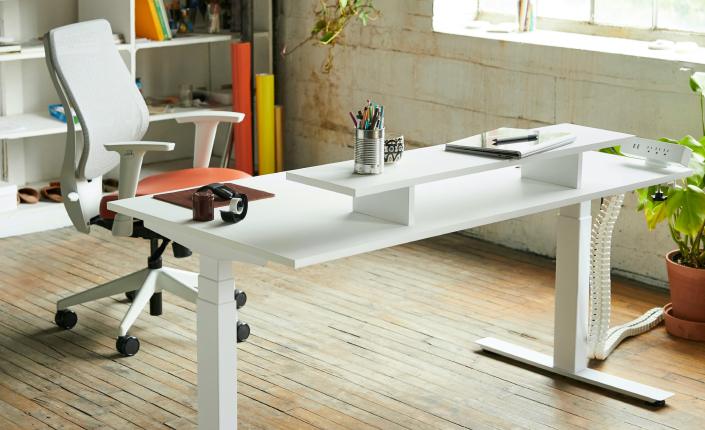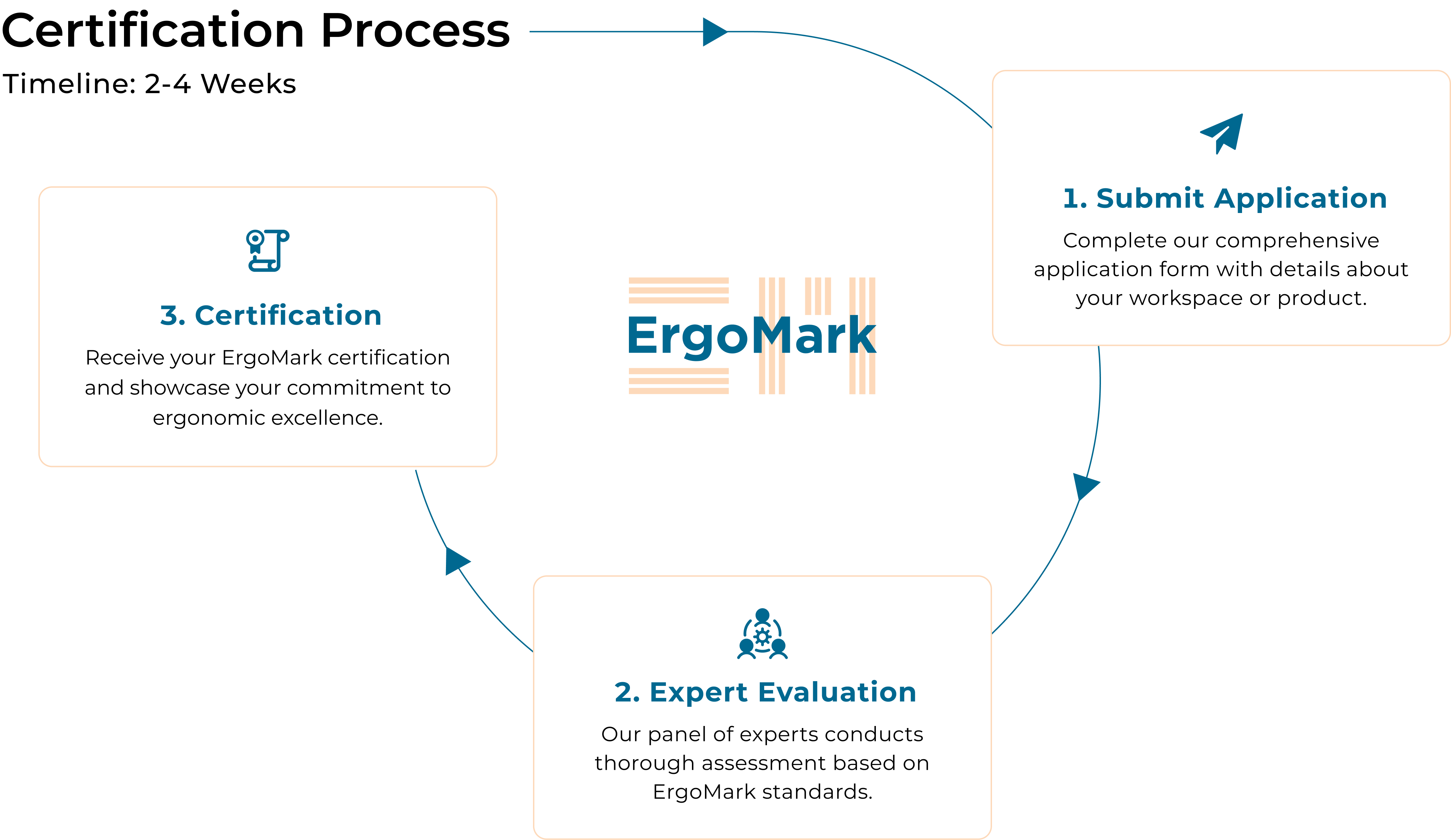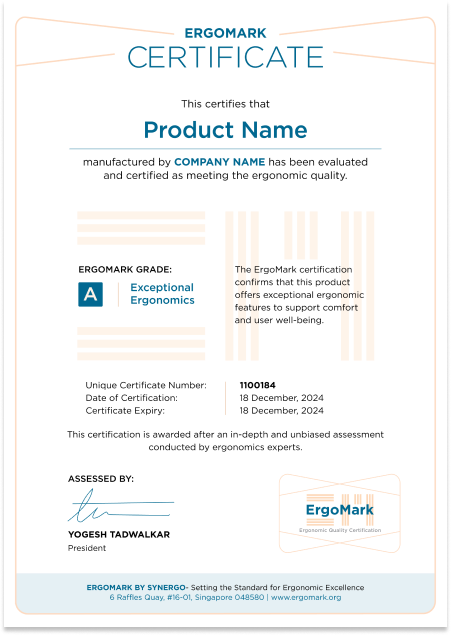The Trusted Standard for
Ergonomic Excellence
ErgoMark is revolutionizing the product design industry through customer-centric ergonomic standards and certification
About ErgoMark
ErgoMark is an internationally trusted ergonomics quality symbol. ErgoMark certification guarantees the highest ergonomic quality of furniture, products and spaces by benchmarking designs against standards like BIFMA, ANSI, and ISO, alongside human factors principles and cutting-edge research.
Benefits of ErgoMark
Who can get ErgoMark?
Furniture Products
- Seating
- Tables
- Beds
- Storage
- Office Furniture
- Specialty items like System Furniture, Kids Furniture, etc.



Frequently Asked Questions
What is ErgoMark?
ErgoMark is an independent certification service that validates the ergonomic quality of furniture, consumer products and spaces. It benchmarks design and features against ergonomic standards such as BIFMA, ANSI, and ISO, and confirms its fit with human factors principles, research-based insights and context of use.
Why is ErgoMark certification critical for companies?
In a market saturated with products claiming to be ergonomic, ErgoMark certification sets genuinely ergonomic furniture apart. It provides a competitive edge by establishing trust and credibility, appealing to health-conscious consumers and organizations that prioritize worker well-being.
What products and services can be certified with an ErgoMark?
ErgoMark can be acquired for furniture products, ergonomics accessories, consumer products, industrial products as well as spaces.
Furniture products: Seating, tables, beds, storage, office furniture as well as specialty items like system furniture, kids' furniture, etc.
Ergonomics accessories: Mice, keyboards, laptop stands, monitor stands, monitor arms, footrests, back-cushions, seat-wedges, mouse pad, wrist-rest, etc.
Consumer products: Electronic gadgets, kitchen accessories, other products meant for human use, etc.
Industrial products: Machinery, tools, medical equipment, etc.
Transportation products: Automobile seats and controls, aircraft and train seats, etc.
Spaces: Building layouts, plant designs, control rooms, labs, warehouses, etc.
How is ErgoMark different from other quality certifications?
Unlike general quality certifications, ErgoMark specifically focuses on ergonomic standards and human factors. It provides a comprehensive, research-based assessment, ensuring the product's design supports human comfort, efficiency, and health, which is often overlooked in broader quality certifications.
What do the different ErgoMark grades mean?
After expert assessment, products may get one of the three ErgoMark grades - A, B, or C. This is what each grade means:
Grade A: Exceptional ergonomics, meeting high standards across all parameters.
Grade B: Good ergonomics, but some parameters may not meet the highest standards.
Grade C: Acceptable ergonomics, but some parameters may be limited.
The 'parameters' above refer to human factors and safety principles, relevant Standards like ANSI, BIFMA, and ISO, Usability Heuristics as well as established and emerging Research. All parameters are contextualized to the specific target user population and use cases to ensure that the assessment is objective and accurate.
ErgoMark is a strict evaluation process and a certificate is not guaranteed to any product that fails to meet the minimum acceptable ergonomics criteria. As such, even with a 'C' grade, consumers can be assured of basic ergonomics quality.
What does ErgoMark look like and how can it be used by companies in their marketing?
ErgoMark certification comes as a visual seal as well as a formal certificate. Companies can add the ErgoMark seal on their marketing materials. This visual symbol acts as an objective and independent endorsement of the product's ergonomic quality, attracting consumers and elevating the brand image during marketing and sales.
The ErgoMark certificate is an official record that the product has gone through the ErgoMark evaluation process. The certificate is valid for 3 years and must be renewed and kept up-to-date since the underlying ergonomics benchmarks do change over time.
Sample ErgoMark
Sample Certificate
Get ErgoMark Certified
